Design at Monzo
Jay Clark, Senior Design Manager at Monzo, with an insider look into the design team at Monzo and how they are evolving with AI.
Monzo is one of the most design-famous companies in Europe. I remember having a pre-paid card back in 2017 and having to top it up. It was so cool to own one.
Monzo has gone on to be a £1.2b revenue, £113m profit with a total of 12+ million customers. It’s becoming an iconic brand, and they’ve always taken design seriously from day 1. Being a customer it’s nice to know the care that goes into crafting their products.
I spoke with Jay Clark, Senior Design Manager at Monzo, to go behind the scenes of how they plan, measure, scale, and keep design quality high in a world where banking meets technology, regulation, and now AI.
What you will read in this article:
Planning at Monzo
Inside the design org (team size, how they maintain quality at scale)
How they interview designers
Who they look to hire for the team
How the Monzo design team are adapting to AI
Jay’s advice to other designers
Intro to Jay
I’ve been designing products for over a decade now. I started agency side, rapidly shipping products for a bunch of start-ups. Then as my career went on I started designing products for larger companies and transitioned in-house. With a brief period of freelancing too.
At Monzo I was the first designer within our Wealth Collective. I helped ship and grow a bunch of our 0 to 1 launches and now I’ve transitioned to more of a leadership role within Wealth, leading a team of 5 excellent designers.
How far out do you plan in detail, and how has that evolved over the years?
We have a huge ambition as a company — to build a product where people can manage their entire financial lives. This means that we tend to look reasonably far out when we’re setting our company ambition. This means we can evaluate whether we’re being bold enough with our plans and how quickly we want to scale and grow new products.
We then plan our work in halves, which simply means 6-month periods. This gives us enough time to think big whilst not giving too much time to get complacent.
At the squad level, it depends on what type of work it is that you’re doing. For a long time when we were building the Wealth Collective at Monzo – we were either in 0 to 1 phase where we were building entire products from scratch, or growth mode.
Most of our 0-to-1 projects don’t tend to be longer than 6 months, so we’ve developed a strong muscle for delivering big, complex product launches.
Then growth is a completely different style of work. We will set an ambitious growth goal for the 6-month period and then do quick fire experiments to learn as much as we can up front. Then we will ship the winners and repeat that process. Often with a few chunkier growth bets thrown in there too.
Then the third mode (there are more but I’ll stop here for now) is vision setting. After we’d spent a bunch of time setting the foundations of our Wealth products, it was time for me to take a step back and think about crafting the vision for the experience layer to connect all of these products. It’s important to have that longer-term view rather than just placing one foot in-front of the other.
How do you measure the success of design at Monzo?
Our design maturity is very high and our leaders all understand and appreciate the value design brings. TS our CEO is always pushing for product delight and Vuokko our CDO has spent almost a decade instilling that culture throughout the company.
Measuring design is easy in some ways and difficult in others. Everything we ship is highly measured thanks to the combination of StatSig and our world-class data engineers. And most things we ship are design-led. We’re really intentional about metrics we’re goaling on too and steer away from vanity metrics. For instance, we goal on active investors as opposed to total investment accounts created. It’s a slightly lower number on paper, but it’s much more useful for us as a product squad.
We have a bunch of top level measures such as knowing that Monzo reviews are 43x more likely to include the word love than high street banks. I’d bet my beloved Honda Jazz that’s thanks to our focus on the customer experience.
Inside the design org
How many designers do you have?
I’m proud of the amazing team we’ve managed to create over these past few years. When I joined 4 years ago, we were about 10 product designers.
We’re now ~50. We also have ~30 researchers and ~10 brand designers. Then about 15 design leaders. So all in all our design org is about 100 strong.
As we expand, I imagine this will continue to grow.
We have members of design spread across our core business areas such as Core Banking, Business, Wealth, Payments, Borrowing, Ops, Growth, Fincrime and more. Design and Research are very much embedded company wide — driving strategy and ensuring we’re shipping customer centric, delightful experiences.
How do you interview designers?
Our processes are different for each discipline within our design org. For product design we put a lot of focus on craft. We used to do our craft interview as part of our full loop (final) process, but when we looked at the data we noticed that this was often the interview that people fell down on. So we moved it earlier, straight after the recruiter call to make sure we were optimising for ours and the candidates time.
In this session we spend 10 minutes getting an intro to the project and then we dive into the Figma file and spend the rest of the session doing what’s almost a live design review. It’s a fun interview.
If they get through that stage, next we look at teamwork and impact. Designers being excellent team members is super important at Monzo. It’s fast-paced, high-pressure work. There’s no time to have an inflated ego and you need to have empathy for those around you. We’re proud of our low attrition rates at Monzo, especially in design. We want to protect that.
In our impact interview we want to make sure the work you’ve done has led to tangible impact for the customer and the business. We have a lofty mission of making money work for everyone – that’s not going to happen if you’re spending most of your time going in circles and cruising through Slack all day. The designer’s role is so important at Monzo. You need to be able to align teams, prioritise meticulously and get value into customers’ hands as quickly as possible. Design already has a seat at the table, so we’re looking for people who know what to do with that responsibility.
If I were to share some tips for interviewing for a design role at Monzo I’d say:
Give a clear sense of the problem you were solving, a view of the customer problem, and why solving it was a commercial benefit for the business.
Ensure you show us what you personally delivered, and what you collaborated on with your team.
Tell a clear story, which shows your personality and unique approach
Help us understand why this is an interesting and challenging problem
How do UX Writers and Researchers collaborate with product squads, and what does this partnership look like in practice?
At Monzo we call groups of squads ‘Collectives’. In Wealth we have two researchers. One who focuses purely on Insurance, and another whose core focus is Savings, Investments and Pensions. It’s valuable to structure ourselves like this as it means each researcher can build up deep customer understanding within these complex areas.
Researchers’ work tends to split up into two types. Tactical research and then more strategic research. Tactical is when the research is informing work in progress and helping teams move forward with confidence. Researchers will often also enable product designers and other team members to do tactical research.
Then on the strategic side, researchers will work with leadership each half to build a discovery roadmap. This tends to be larger, more ambiguous and complex research that will inform the trajectory of our squads in the future. An example of this from the past was spending time exploring what our first investments offering should be.
We often say that we’re seeding, shipping or scaling. Research plays a big part across all three of those.
Our writers tend to cover more ground than research. Our product designers are expected to be good writers, this means we don’t need writing to be embedded in every team. Our writing system really helps here too.
Why is Monzo a special place to work?
You could probably ask this to all of our employees and get hundreds of valid answers. For me it comes down to customer centricity at scale. There’s something special about working on a product you see people using almost every time you leave your house. I can pop out to the shop, see a child with their parent using their under 16 card — and then come back home straight to a design review about a new under 16s savings product all in the space of 5 minutes. It’s like a constant drip feed of empathy. It also makes the impact you’re having on humanity feel much more real. That really motivates me to do my best work.
Then there are a bunch of other things that now feel like non-negotiables for me at work. Things such as:
Defaulting to transparency — the team’s goals, metrics, slack channels and calendars are all open by default which is great for visibility.
Humility — leaders are willing to own up when they make mistakes.
Safe space — Monzo is a safe space for everyone to do their best work.
Quality bar — there are lots of people smarter than me around me which allows me to level up every day.
Trust — people are trusted to do big, complex things well with lots of autonomy.
Design led — design is one of our superpowers and that gives us permission to to our best work.
AI and the Future of Design
How is Monzo thinking about AI and the role design has to play?
My view on this is that the principles we apply to our work will stay the same. But the approach and tooling will change. Leading to us being able to do much more, faster.
We’re already seeing that things such as analysing research and understanding the nuances around regulatory requirements are all much faster than they were. Then there are brand new capabilities available to designers like rapid prototyping within our code base.
All of this means more time for creativity and play. AI has added a whole new dynamic to the role of being a product designer which is a welcome, refreshing addition and I’m excited to see how things play out.
My strongly held view is that designers are best positioned in this new AI era. Especially those with good taste, agency and willingness to adapt.
Heldiney, one of our Design Leads, has been organising AI lunch and learn sessions which have been amazing for up-skilling the team.
What is Monzo’s stance on design systems and AI? How will these domains evolve together?
I discussed this with Sam Branter our design systems lead and this is a summary of the discussion:
Our principles and perspective of how we utilise design systems at Monzo will remain the same, just that we’ll adapt our tooling and workflows to become more efficient and consistent with our output.
One current example is that we are starting to use Cursor rules alongside the Figma MCP server, where a Figma frame URL can spit-out code-ready designs, where it’s implementing our components and core abstractions (such as colour) correctly across both iOS and Android using our unified definition on the backend.
In the future though, we may consider how Generative AI could be used for component creation, where the role of the design system team shifts from defining static libraries to just defining the rules and guardrails, that AI then uses to generate compliant UI.
There’s also a case for AI to be used to ensure design system hygiene, such as crawling codebases to flag inconsistencies, or promote custom components into the core library if it detects more than ‘n’ instances in the apps.
Designing in a Regulated Industry
How does being a bank change your design process?
Designing experiences around people’s money is a big deal. This means that even more care is needed than usual. Banking is a regulated industry – and this is for good reason. The FCA (Financial Conduct Authority) have rules we need to follow across our products which help ensure we’re facilitating good outcomes for customers.
This means that in addition to knowing what good design looks like, we need to also build up our knowledge of banking regulation. We have people around us who help with this. Teams tend to have legal and compliance embedded within them. The closer designers can collaborate with these team members, the faster we’re able to get to good customer outcomes.
We’re fortunate that the regulator is always looking to adapt the rules when it makes sense to do so. We’ve collaborated with them on a handful of design & research sprints with the goal of further understanding how customers needs can best be served, safely.
Craft at scale
How do you ensure design quality stays high as you scale?
This is one that’s close to my heart. The foundation of this is having a solid design system – and processes built around that team. We’re fortunate to have this at Monzo. But that’s not a silver bullet. Designers (including myself) can find ways to enter freestyle mode with even the simplest of components. Sometimes freestyling is encouraged, other times it’s unnecessary. We definitely subscribe to the notion of our design system being the floor rather than the ceiling. But sometimes the floor is more than good enough.
We have two useful rituals. Design reviews and design crits. Design crits happen at a cross-company level. Where designers from all collectives come together, split out into groups and critique work. This is important vs just critiquing in your product area as often there’s more crossover than you’d think on the surface. It’s also great for visibility of work. We also have a Slack channel called design-feedback which we use for async feedback.
Design reviews is something I introduced a couple of years back and have been super useful. These have a different audience as we want cross-org design leads to attend. We try to tier projects depending on project type. Tier 1 projects (for instance a new product launch) have a design review towards the start. This is to ensure the team is on the right trajectory and is being creatively ambitious enough. They also have a design review close to launch where we review design quality, systems usage, brand design etc.
The combination of these tools and processes helps us keep the bar for design nice and high without slowing teams down. For a lot of work though, design reviews aren’t necessary. Teams are very autonomous.
Advice for other designers
Do you have any secret weapons for designers who might be reading this?
Weekly design jams with your squad. Put in a recurring 45 min meeting with your cross-functional squad called design jam. Post in the morning with anything on your mind to discuss and ask for any ideas from the team too. Use that time as a forcing function to talk about design and the product you’re building. If you try this for 4 weeks and it’s not valuable, I’ll buy you a coffee.
Thanks to Jay for giving such a detailed insight into Monzo’s design team. They are hiring for designers, so please do check the roles out here.
Let me know your thoughts on this article. Until next time!



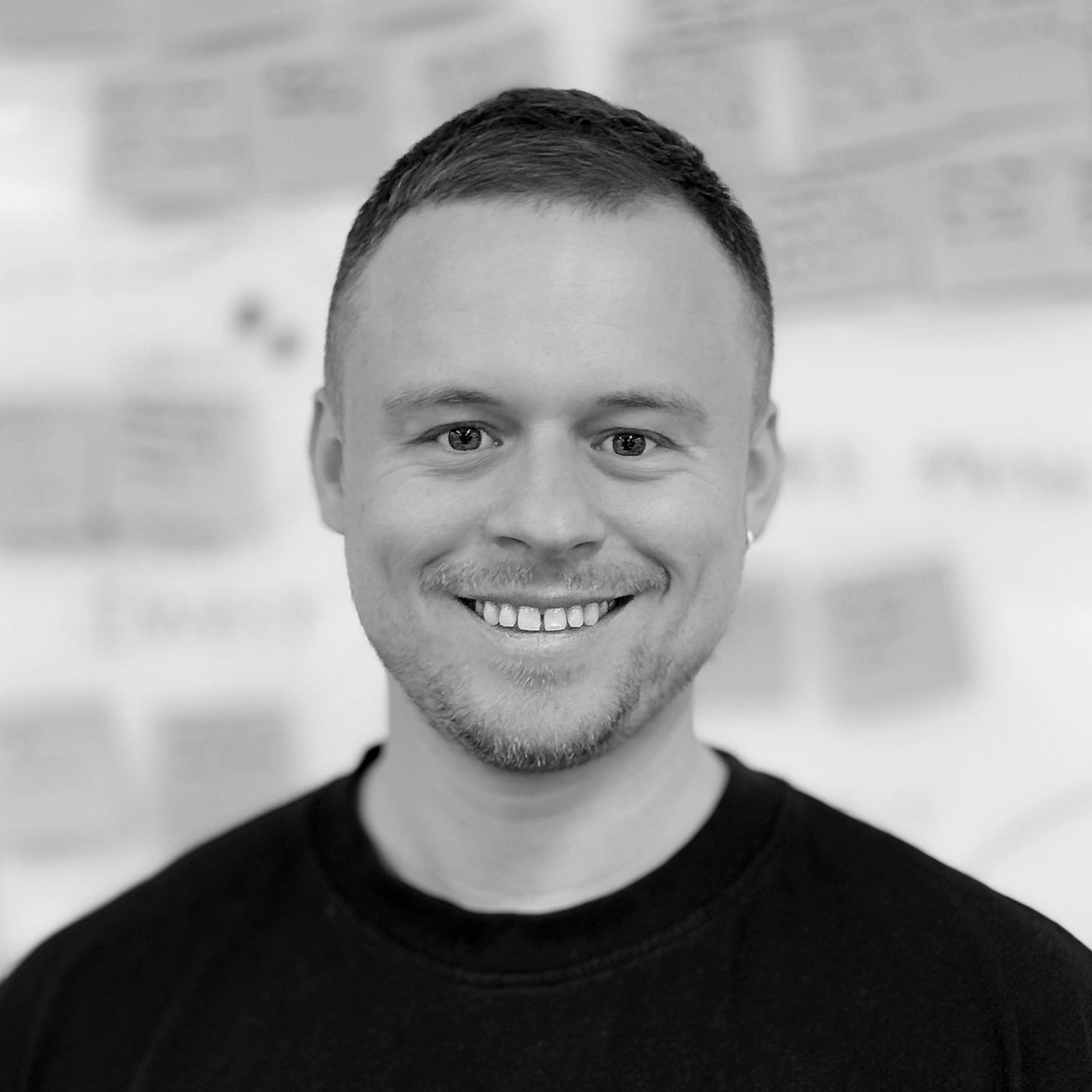
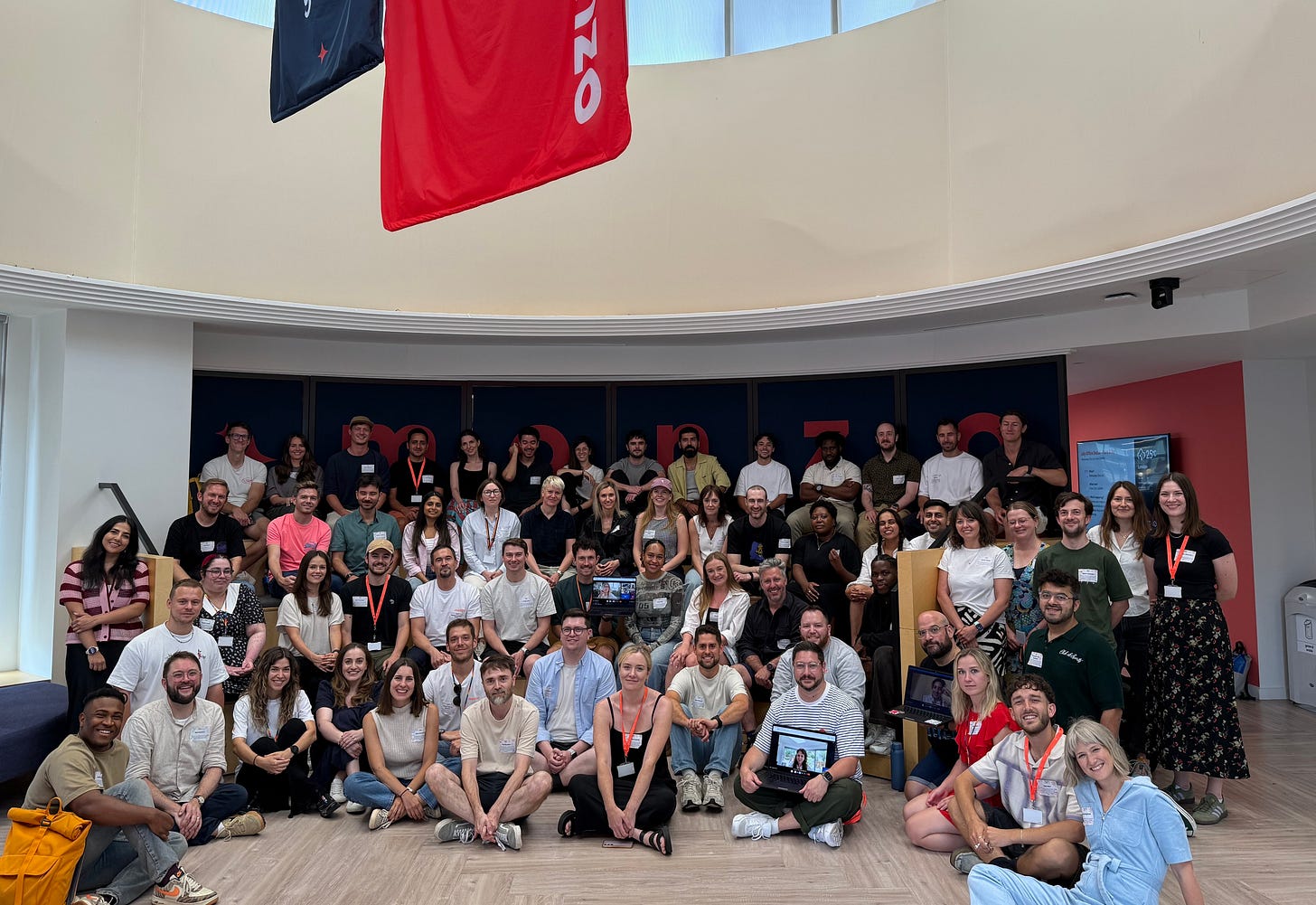
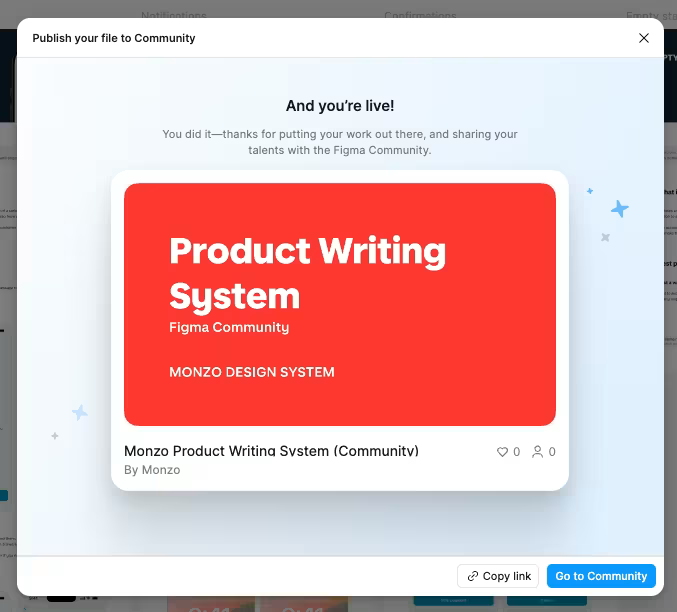
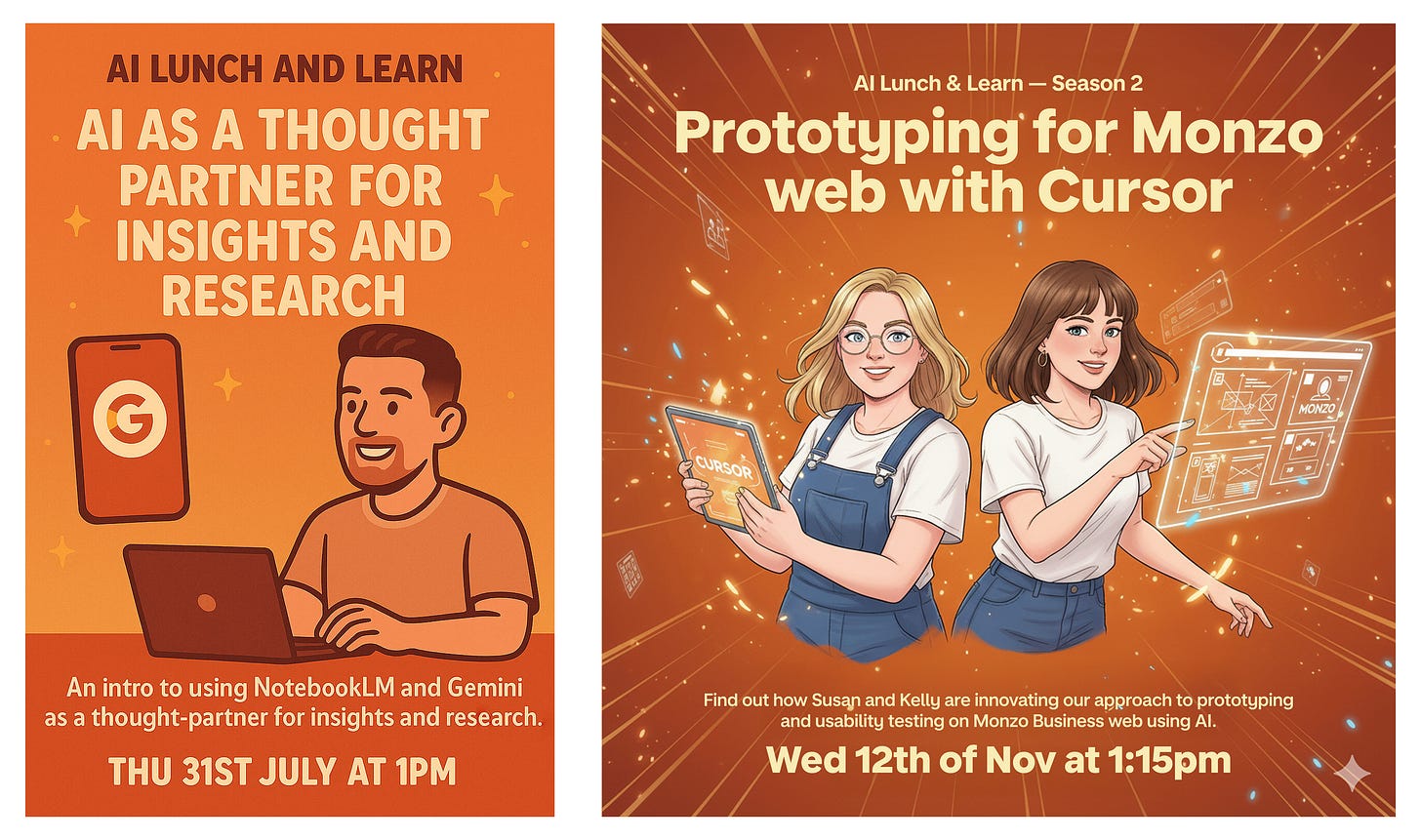
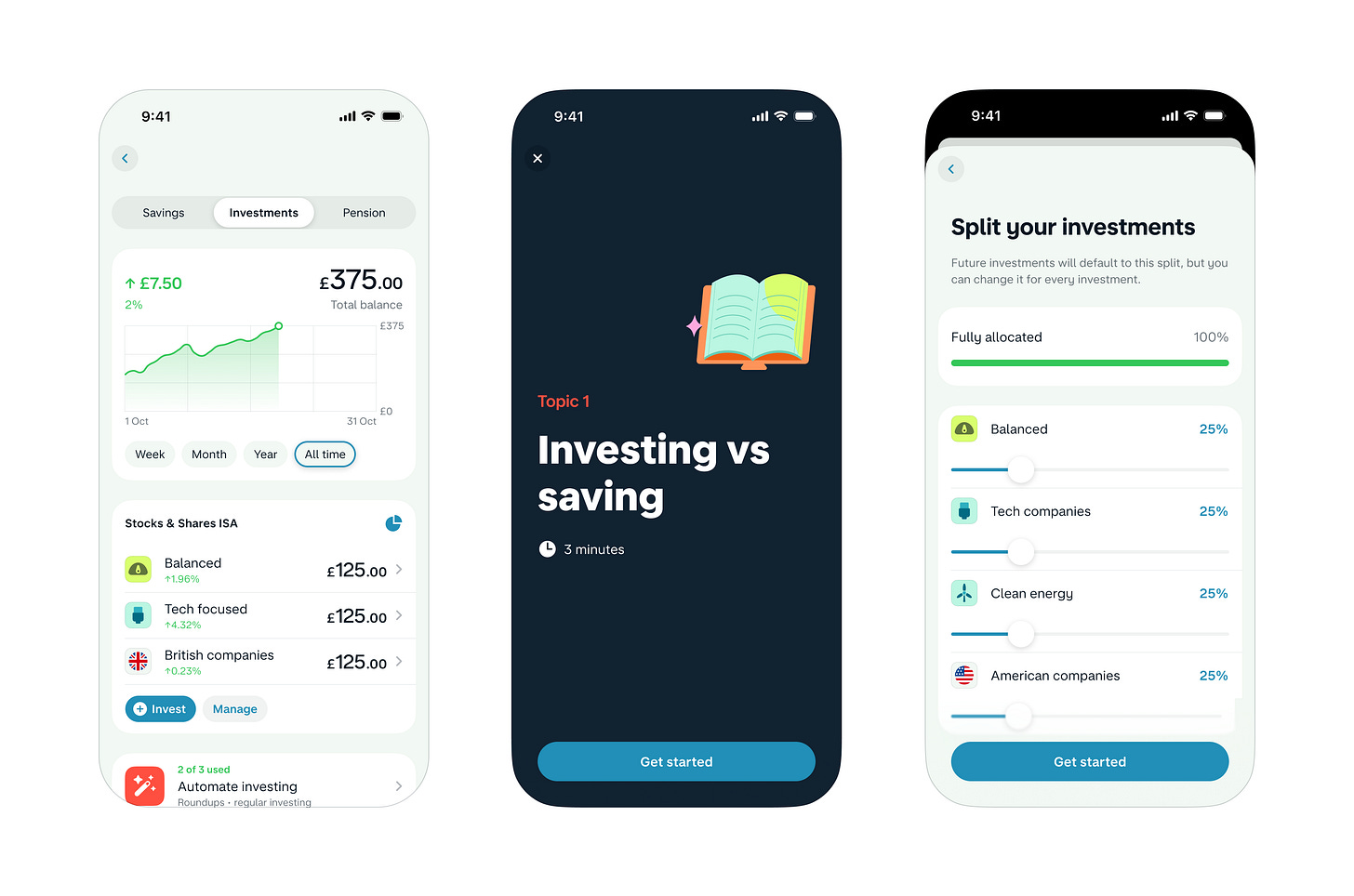
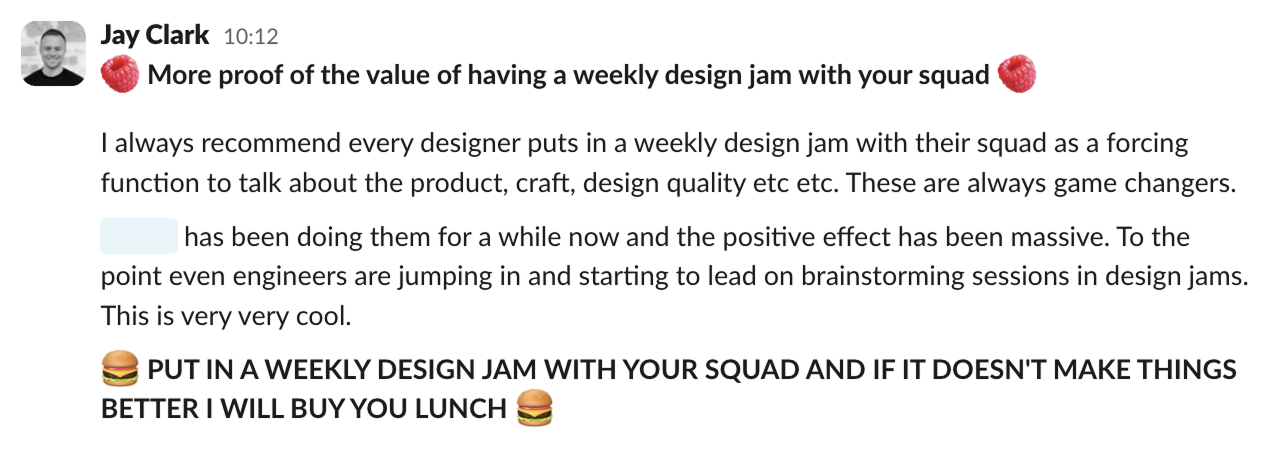

A very well-written guide, bold, educational, and insightful.
One of the things I love about Monzo is how you invest in building deep knowledge of the regulated industries you design for.
I remember at a Monzo event, one of product designers who worked on the insurance product said that you need to become the subject-matter expert. It’s so true and absolutely critical when designing in a regulated environment.
I also think the way you plan to use AI allowing it to uncover future component-creation needs is a great example of applying AI thoughtfully and practically.
Really insightful and great read. Thanks so much